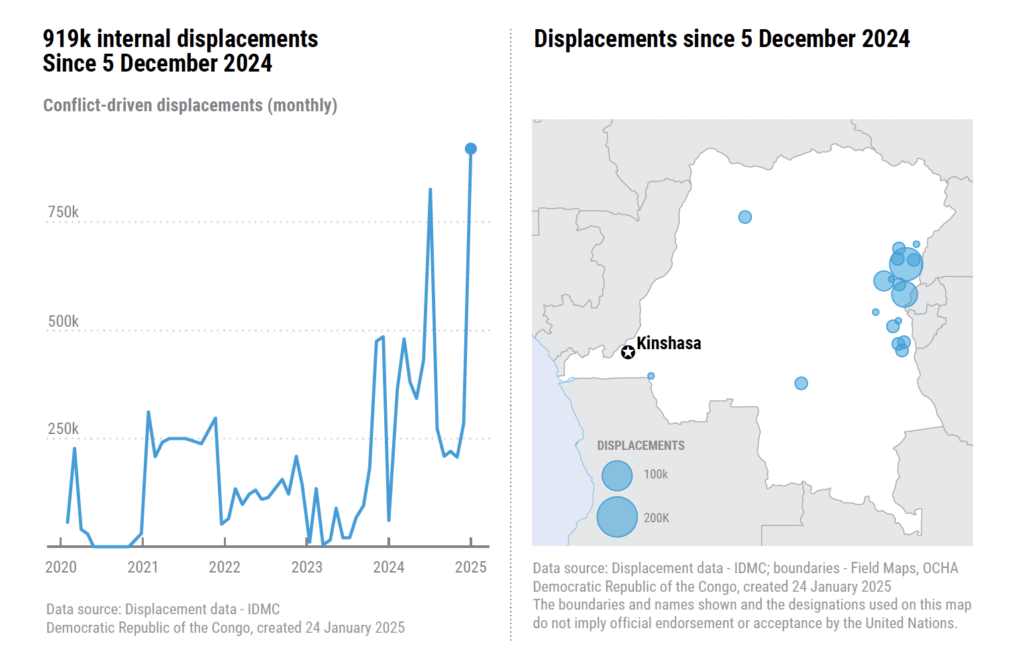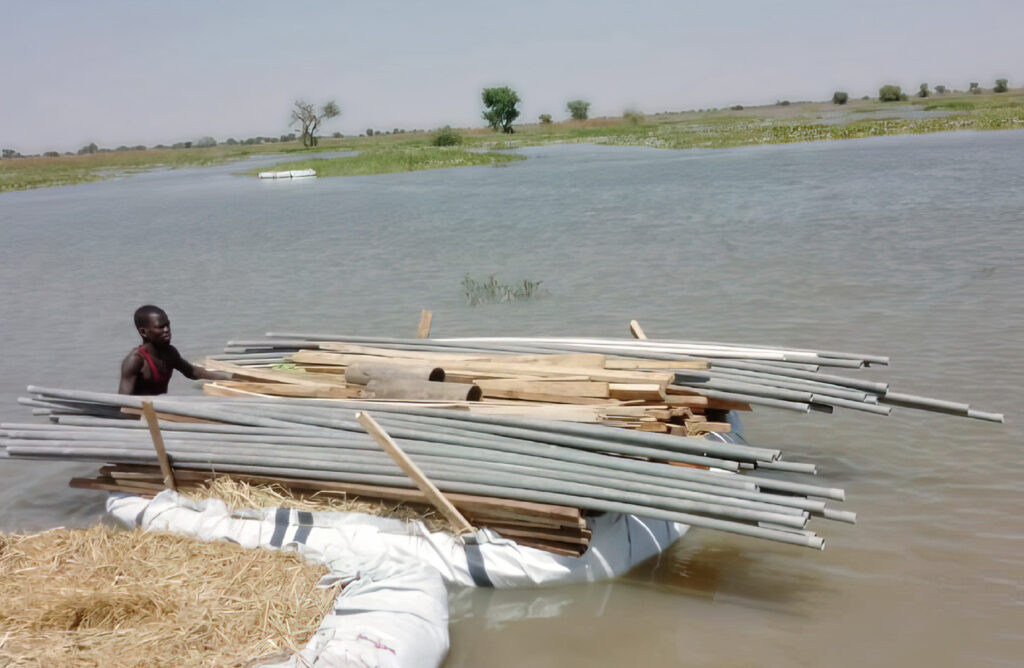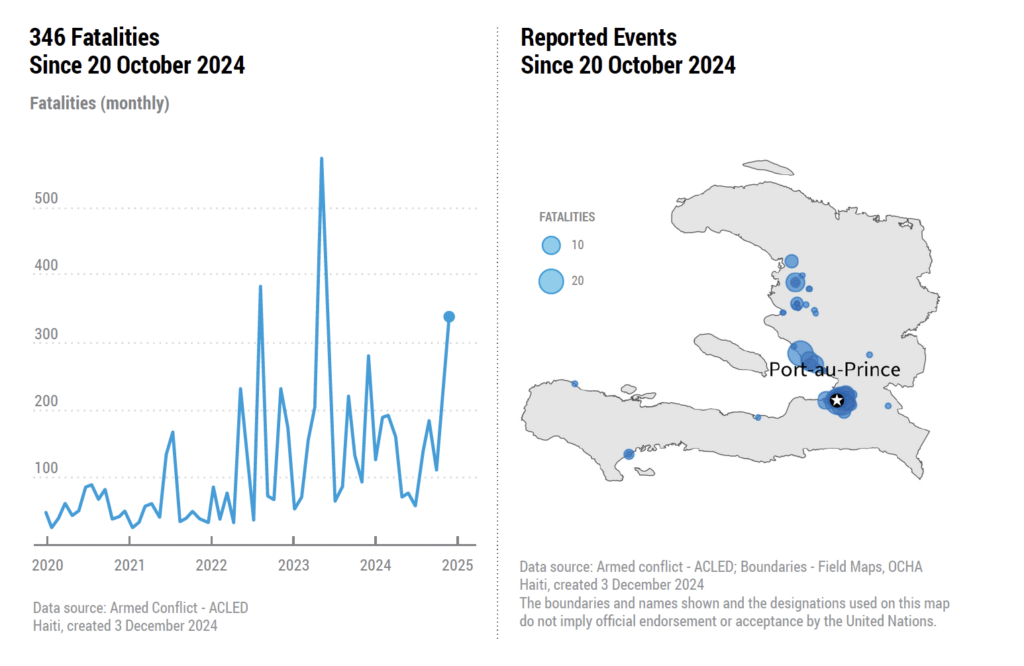Partners:
International Rescue Committee, GoalPrime Organization Nigeria, United Nations Central Emergency Response FundSummary:
Every day, new information is produced about dozens of humanitarian crises around the world, yet critical warning signs can often go unnoticed. Humanitarians may sense that a crisis is worsening but lack the evidence needed to secure funding or mobilize resources. Without timely, clear analysis, opportunities for intervention can be missed.
To address these challenges, OCHA’s Centre for Humanitarian Data developed HDX Signals, a product that gives humanitarians the insights they need to act quickly and decisively. It monitors key datasets and generates automated alerts, or ‘signals’, when significant negative changes occur in a particular location.
Launched publicly in June 2024, HDX Signals uses advanced analysis and AI-powered summaries to provide actionable insights, helping organizations allocate resources and respond to needs faster than ever. As of February 2025, HDX Signals covers 200 locations and five topics: agricultural hotspots, conflict events, displacement, food insecurity and market prices.
HDX Signals is already proving its value. It was designed to help the UN Central Emergency Response Fund (CERF) monitor concerning situations. To date, CERF has used HDX Signals to inform allocations totaling more than US$46 million to seven countries, benefiting 2 million people. Organizations including GOALPrime Nigeria and the International Rescue Committee (IRC) use HDX Signals to allocate funds, protect staff and save lives.

Challenge:
The consequences of delays in recognizing and responding to deteriorating humanitarian crises can be devastating. People may wait longer for essential aid, and the cost of interventions can rise as crises escalate.
Early detection of emerging crises is hindered by several barriers:
Difficulty detecting worsening conditions
Identifying emerging crises can be difficult, especially when new shocks develop within broader complex emergencies. Intensified fighting or sudden displacements in one area can be overshadowed by a larger crisis.
Overwhelming quantity of data and information
The number of ongoing humanitarian operations and the volume of information generated about them creates a challenge. The 2025 Global Humanitarian Overview includes more than 70 countries, and OCHA platforms such as ReliefWeb and the Humanitarian Data Exchange publish a constant flow of information products and datasets from organizations around the world. Important insights can be lost in inaccessible formats or fragmented sources, requiring weeks or even months to piece together.
Time- and resource-sensitive analysis
For organizations such as GOALPrime Nigeria, the time required to analyse data can delay interventions. Before HDX Signals, GOALPrime Nigeria spent months collecting and assessing data before it could design programmes, seek funding and respond to crises. This was expensive, and the delay hindered its ability to respond to new emergencies.
Insights needed across a vast range of contexts
Humanitarian organizations are often asked to respond to or fund efforts in places where they have not worked before. As Nicolas Rost, CERF’s Head of Programme, explained: “CERF’s mandate is to enable humanitarian responders to deliver life-saving assistance whenever and wherever crises occur. However, in contexts with a limited humanitarian presence, determining allocation amounts can be challenging without historical analysis to assess crisis severity relative to Government capacity and population vulnerability.”
Outcome:
HDX Signals was created to bridge the gap between available data and actionable insights. A Signal includes a headline, five-year trendline, map, summary text, and links to more information and data. Signals are generated based on thresholds for a given dataset. For example, a Signal for market monitoring is triggered where there has been a high or severe increase in the cost of a food basket in the past month.
HDX Signals is one of the first OCHA products to incorporate Generative AI. It uses OpenAI’s GPT4-o model to transform reports into concise summaries and key messages, saving humanitarians valuable time by processing material that would otherwise take hours to read. The Centre’s team reviews all HDX Signals before sharing.
Mr. Rost explained: “In addition to the timeliness of the alert, the historical trend analysis offered by HDX Signals delivers crucial context for emerging crises, enabling CERF to make informed funding decisions.”
For example, a Signal in January indicated that armed conflict in eastern Democratic Republic of the Congo (DRC) had displaced more than 900,000 people over several weeks. CERF was already considering an allocation, but the Signal’s historical trend analysis showed this was DRC’s worst violence-related displacement in more than five years. As a result, CERF increased its allocation.
HDX Signals also helped CERF to recognize the severity of a crisis in a country not always on its radar. In July 2024, a Signal warned that 1.4 million people in Namibia – nearly half the population – were projected to face high levels of acute food insecurity. This marked a dramatic increase from the previous year, when 579,000 people were affected.
As Mr. Rost explained: “Namibia has no OCHA office or UN inter-agency humanitarian response plan. In these circumstances, determining allocations can be challenging. CERF recognized Namibia was experiencing its worst drought in 100 years, but the HDX Signals alert deepened our understanding of the severity of food insecurity compared to previous years. The alert confirmed the need for CERF to allocate funding for life-saving services and food vouchers for women and children in the hardest-hit districts.”
CERF used HDX Signals over the past six months to inform allocations totaling more than $46 million to Cameroon, Cuba, DRC, Malawi, Namibia, Niger and South Sudan, benefiting almost 2 million people.
IRC now uses HDX Signals as a key product to confirm and contextualize its country reports. In December 2024, a Signal was issued for conflict events related to escalating gang violence in Haiti. The team at IRC’s headquarters was aware of early reports of growing insecurity, but the Signal provided critical data and historical trends, validating the team’s concerns. With this evidence, IRC staff quickly elevated the issue, ensuring senior leadership were aware of security threats that could affect staff safety and the delivery of assistance.
For GOALPrime Nigeria, HDX Signals represents a turning point in how it works. In early October 2024, a Signal flagged severe disaster-driven displacement across the country due to flooding from heavy rains between June and September 2024. This alert enabled the organization to quickly plan and design a response and secure funding in record time. As of January 2025, GOALPrime Nigeria is implementing seven projects based on analysis first received from HDX Signals.

Conclusion:
HDX Signals demonstrates how clear and timely analysis can improve humanitarian decision-making and response. OCHA’s Centre for Humanitarian Data will continue partnering with data contributors, and it is grateful for the collaboration from the European Commission’s Joint Research Centre, the Armed Conflict Location & Event Data Project, the Internal Displacement Monitoring Centre, the Integrated Food Security Phase Classification and the World Food Programme.
This year, HDX Signals will expand to incorporate alerts for more topics and sources. It also plans to add two alerts: INFORM Severity, a composite index used to express the severity of humanitarian crises globally; and FloodScan, which estimates the global extent of floods at a daily cadence and is produced by Atmospheric and Environmental Research.
HDX Signals is publicly available. Sign up today to receive alerts and learn how HDX Signals can enhance your awareness of humanitarian crises.
Download the full story here.

